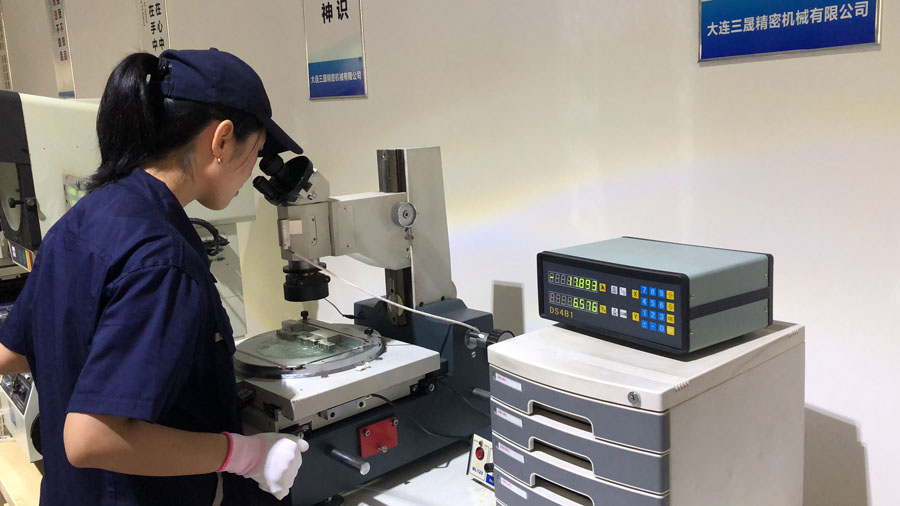The machining of mechanical parts is a crucial step in the manufacturing process, and the quality and precision of these parts directly impact the performance and reliability of the final product. To ensure the quality of machined mechanical parts, strict inspection and testing must be conducted. This article focuses on the post-machining inspection process and its significance.
Purpose and Importance of Inspection
The purpose of inspecting machined mechanical parts is to verify whether their dimensional accuracy, shape precision, surface quality, and other attributes comply with design requirements and technical standards. Through inspection, errors and issues that may have occurred during the machining process can be promptly identified and appropriate measures taken to correct them, thus ensuring that the quality and precision of the parts meet design specifications.
Ensuring Product Quality:
Inspection ensures that the dimensions and shape precision of the mechanical parts meet design requirements, thereby guaranteeing the performance and quality of the final product.
Enhancing Machining Precision:
By identifying errors and issues during inspection, adjustments and improvements can be made to the machining process in a timely manner, leading to higher machining precision.
Reducing Costs:
Timely detection and correction of machining issues help avoid the waste and rework caused by non-compliant parts, leading to cost reduction.
Ensuring Safety:
In critical components and high-risk applications, the dimensional and shape precision of parts are vital for safety and reliability. Inspection safeguards product safety.

Inspection Methods and Tools
When conducting post-machining inspection of mechanical parts, there are various methods and tools available to ensure the quality and precision of the parts. Below are some common inspection methods and tools:
Inspection Tools
Gauge Inspection: Using various measuring tools such as calipers, micrometers, and dial indicators to measure the dimensions of the parts and verify their accuracy.
Optical Inspection: Using optical equipment such as projectors and microscopes to inspect the shape precision and surface quality of the parts.
Vision Measurement: Employing vision measuring machines to perform three-dimensional measurements and analysis on complex-shaped parts.
CMM Inspection: Utilizing Coordinate Measuring Machines (CMM) for full-size inspection of intricate shapes and high-precision parts.
Functional Testing: Conducting functional tests on the parts to validate their compliance with operational requirements.
Inspection Contents
Dimension Measurement: Using tools like calipers, micrometers, dial indicators, etc., to measure the dimensions of the parts and ensure they fall within the design-specified tolerance range.
Shape Inspection: Employing optical projectors, contour gauges, and similar equipment to inspect the shape and contours of the parts, ensuring alignment with the design drawings.
Surface Quality Inspection: Using surface roughness testers, optical microscopes, and related devices to examine the surface quality of the parts, ensuring their smoothness and roughness meet the required standards.
Hardness Testing: Using hardness testing machines to assess the hardness of the parts, validating their strength and wear resistance.
Profile Measurement: Employing Coordinate Measuring Machines and similar equipment to perform comprehensive measurements of the part’s profiles, obtaining more precise shape and dimension data.
Weight Inspection: For parts requiring precise weight measurements, using electronic scales or similar equipment to check whether their weight meets the specified requirements.
Material Composition Analysis: Using spectrometers, chemical analyzers, and related equipment to analyze the material composition of the parts, ensuring they meet the required specifications.
Conclusion
By implementing the above inspection contents and methods, the quality and precision of mechanical parts can be ensured to meet design requirements, thereby enhancing product reliability and longevity. During inspection, strict adherence to standards and protocols is crucial to ensure the accuracy and reliability of the inspection results. Only through comprehensive inspection can the quality and performance of mechanical parts meet customers’ expectations and demands.



